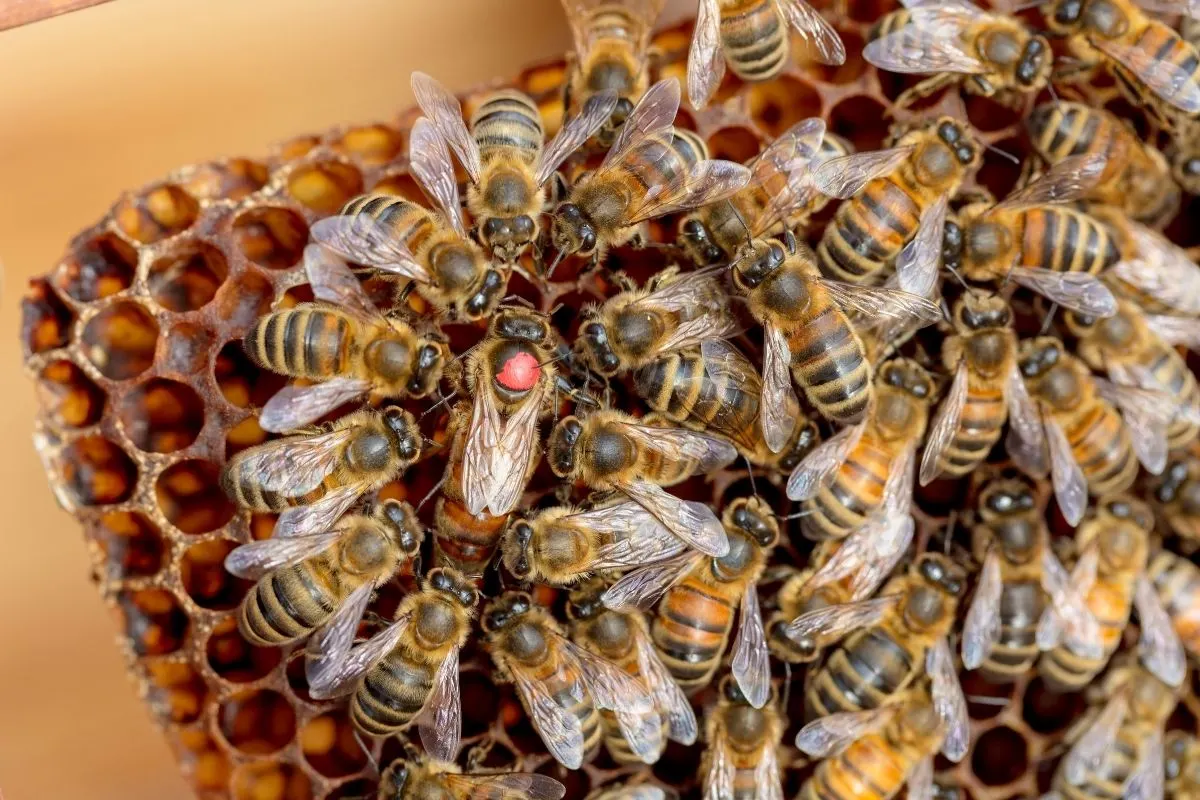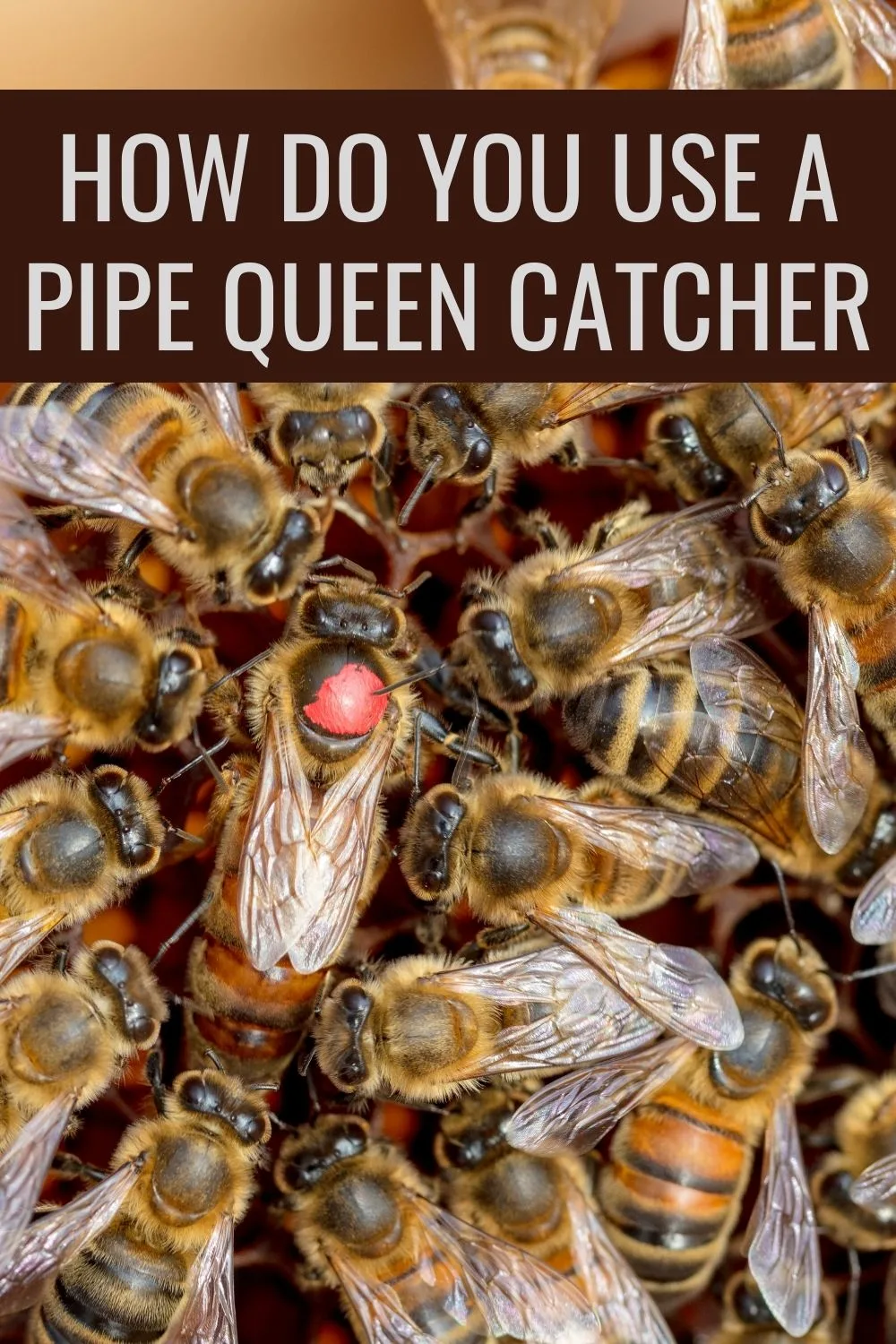Beekeeping sometimes calls for the capturing of the queen bee and keeping her safe and secure. You want to do this process as carefully as possible ensuring you do not injure the queen or accidentally kill her while trying to capture her. A pipe queen catcher is a device that can be used to perform this delicate task with minimal risk to the queen. How are pipe queen catchers used to secure the queen?
Remove the sponge from the large end of the pipe with a large opening. Place the opening of the pipe over the queen and wait for her to crawl inside. Once she is inside the pipe entrance, lift the pipe up and block the entrance hole with the sponge. The queen is now trapped in the catcher.

When you need to capture the queen on one of your bee colonies, it is a time for patience, focus, and attention to detail. The queen is the life force of the colony, and it will be seriously disadvantaged should the queen suffer harm. A pipe catcher is one method to safely catch the queen, and we have written some guidelines on how to do it correctly.
Using A Pipe Queen Catcher To Secure Your Queen
A pipe queen catcher is a device made from clear plastic, shaped similarly to a tobacco pipe. One end is large and bulbous, and it then narrows into a tube-like shaft with a small opening at the other end.
The pipe is made from clear plastic so you can see once the queen is inside the trap. The narrow end of the pipe is usually plugged with a cork or rubber stopper that fits tightly into the end of the pipe.
The large bulbous end of the pipe has a fairly large opening with a lip around the edge, and it is usually plugged with an appropriately sized piece of sponge. A sponge is used to plug the larger opening because it is porous and will allow air to pass through the sponge and into the chamber.
This means that you could keep the queen in the pipe queen catcher for some time while you perform other tasks without the concern that she may suffocate from being confined in the catcher.
Some pipe queen catchers are made from glass, but there is always the risk of breaking these pipes, so the better option is the pipe made from plastic.
How to use your pipe queen catcher
Using the pipe queen catcher is quite simple, and in my experience as a beekeeper, simple is what you want, especially when working with gloved hands.
Beekeeping gloves make you lose some dexterity and fine motor skills necessary for the gentle handling of the queen. The pipe queen catcher’s simple operation does not require dexterity and can easily be achieved while wearing bee gloves.
Follow these steps to use your pipe queen catcher to isolate and trap the queen.
- Ensure the cork in the small end of the pipe is snug and secure.
- Remove the sponge from the opening at the large end of the pipe.
- Locate the queen on the comb.
- Holding the pipe, so the large opening is pointing down, gently push workers and attending bees aside, away from the queen.
- Once the queen is isolated, place the opening of the wide end of the pipe catcher over the queen, being careful not to trap her legs or wings under the edge of the pipe or the lip of the opening. Care must also be taken not to press down on the pipe too hard and accidentally crush the queen.
- Wait for the queen to climb up inside the bulbous section of the pipe.
- Lift the pipe up and quickly but gently push the sponge into the opening in the wide end of the pipe to effectively trap the queen inside.
The queen is now safely inside the trap, and she will have space to move around inside the large section of the pipe. She may even walk up the narrow section of the pipe, and this is ok.
Here is the benefit of the pipe being made of clear plastic. You can now examine the queen and monitor her health and safety in the pipe while completing your other tasks.
The queen will have air coming into the pipe thanks to the sponge at the large end, allowing the transfer of air in and out of the chamber.
When it is time to release the queen, the process couldn’t be easier. Prepare the location where you want to put the queen, either a box for transport or a small box for temporary housing. You could also place the queen back in the hive using the same steps detailed below.
How to return the queen to her hive
Follow the next steps to get the queen to exit the capture pipe.
- Leave the sponge in place at the large end of the pipe.
- Remove the cork or stopper from the narrow end of the pipe.
- Place the narrow end of the pipe at the opening of the queen cage where you want to store the queen or release her into the beehive.
- Make sure the large end with the sponge is pointing up towards you.
- Remove the sponge from the large pipe end, keeping tabs on the queen that she does not come out that end.
- Gently blow into the large opening of the pipe. This encourages the queen to head up the narrow part of the pipe towards the exit at the narrow end.
- Once the queen bee has walked out of the narrow end of the pipe, the transfer is complete.
The queen will now be inside the container you prepared for her or safely back inside the hive. This method of trapping and transferring the queen is safer than using queen clips that have a spring. This is especially true when working your bees with gloves.
The spring clips require constant pressure to keep them open. Releasing the clip at the wrong moment, or if the tabs of the clip slip out of your gloved fingers, you run the risk of squashing the queen.
The pipe queen catcher eliminates more of these risks to the queen during the capture, and the queen’s release is more easily controlled, particularly if you want to package the queen for transport.
Conclusion
A pipe queen catcher is a simple, easy, and gentle method of working with your queen bees. The operation of the pipe and portion it uses to catch the queen and transfer her to a cage, a transport container, or even back into the hive is safe and less stressful to the queen.
A pipe queen catcher is highly recommended for beginner beekeepers working with their queens because it removes the need to use fingers or clips, which have a higher risk of damaging the queen.



Best Queen Marking Pens
Sunday 26th of December 2021
[…] fine point allows for easy marking of the queen in a queen trap or cage without damaging the pen’s point trying to mark the queen through the gaps in the […]